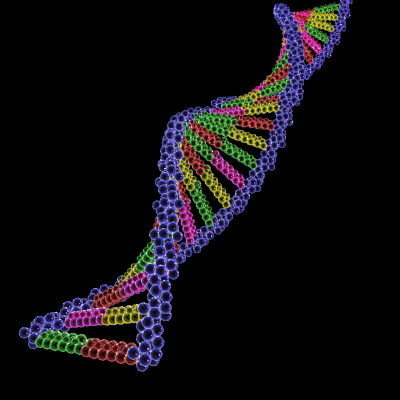Evolution has seen fit to impart our genetic code with residual sequences that until recently were thought of as mere anomalies with no apparent biological significance. However, a new study from researchers at the University of Utah School of Medicine describes a scenario in which the 8% of our genome that is viral in origin has been repurposed through human evolution as a weapon against viral invaders.
The investigators report that snippets of viral DNA embedded in the human genome regulate genes that are integral components of our innate immune system, the first line of defense against pathogens, including viruses. Moreover, the researchers found that when some of these bits of foreign code are removed experimentally, the defense system becomes crippled.
“We show that some of these endogenous viruses have shaped our biology,” explained co-senior study author Cédric Feschotte, Ph.D., associate professor of human genetics at the University of Utah. “Within mammalian genomes are reservoirs of viral DNA that have fueled innovation of the innate immune system.”
The findings from this study were published online today in Science in an article entitled “Regulatory Evolution of Innate Immunity Through Co-Option of Endogenous Retroviruses.”
The human innate immune system is a well-orchestrated response that has evolved to disarm and defeat foreign invaders. Upon infection, cells dispatch a silent alarm, releasing interferons, triggering nearby cells to activate an arsenal of hundreds of genes that fight off intruders. By analyzing publicly available genomic datasets from human cells, the authors discovered thousands of endogenous retroviruses that appeared to be activated by various interferons.
However, because these retroviruses were assimilated into our genomes millions of years ago, they have long since lost the ability to produce infectious particles. One clue to a potential modern-day function of some of these interferon-inducible elements came from their location in the genome. Instead of being distributed randomly, they were enriched near genes with known functions in immunity.
“These were the first signs to us that some of these elements may be truly involved in switching on immunity genes,” noted Dr. Feschotte.
To determine whether these pieces of viral DNA were indeed important for immunity, the scientists used the CRISPR/Cas9 gene editing tool in cell culture to remove several of these viral sequences systematically, each located near known immune genes. Interestingly, they found that in mutant cells lacking the foreign code, the adjacent immune genes could not turn on properly in response to interferon, demonstrating that they act as viral-derived switches. Additionally, the researchers described that when cells lacking the viral DNA element near the inflammasome defense gene AIM2 were infected with a virus, their ability to mount an adequate immune response was significantly reduced—indicating that ancient viral DNA has become necessary for mounting a proper defense against today’s viral infections.
“The interferon response is like the alarm system of the cell,” stated lead study author Edward Chuong, Ph.D., postdoctoral fellow at the University of Utah. “We found that some of the most important switches in this system are actually derived from ancient viruses.”
The authors also report findings clues that other endogenous retroviruses may have independently altered the interferon responses of other mammals, potentially pointing to a widespread mechanism underlying species-specific immune responses.
“It’s likely no accident that innate immune systems reclaimed some of these viral remnants,” remarked co-senior study author Nels Elde, Ph.D., assistant professor in the department of human genetics at the University of Utah. “Many viruses originally entered our genomes as part of the process of viral replication. The evolutionary process turned the tables to our benefit.”







